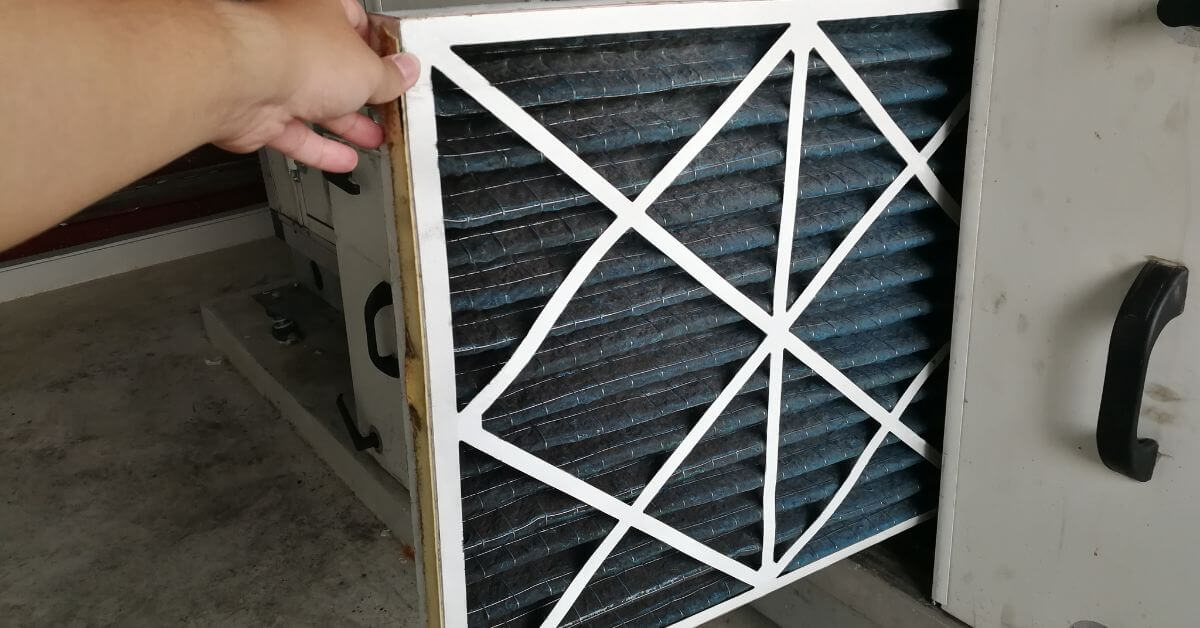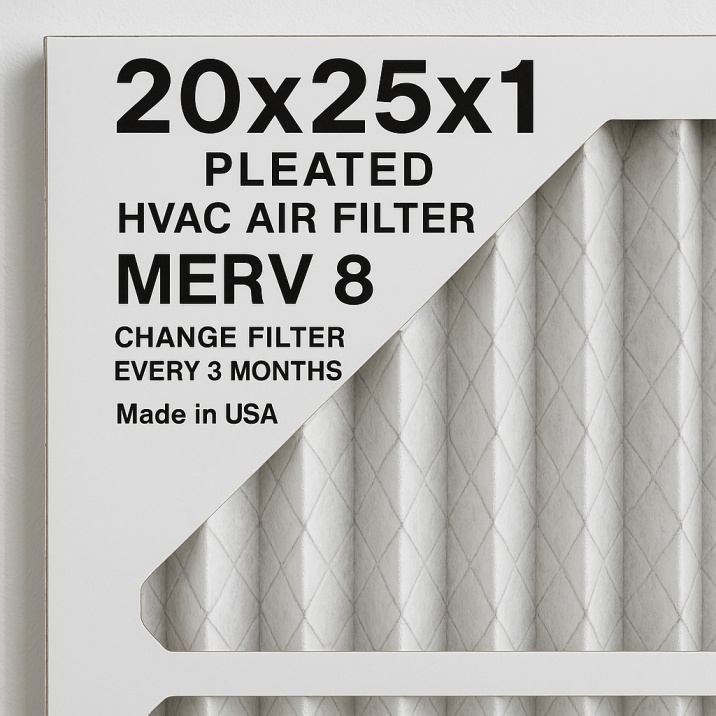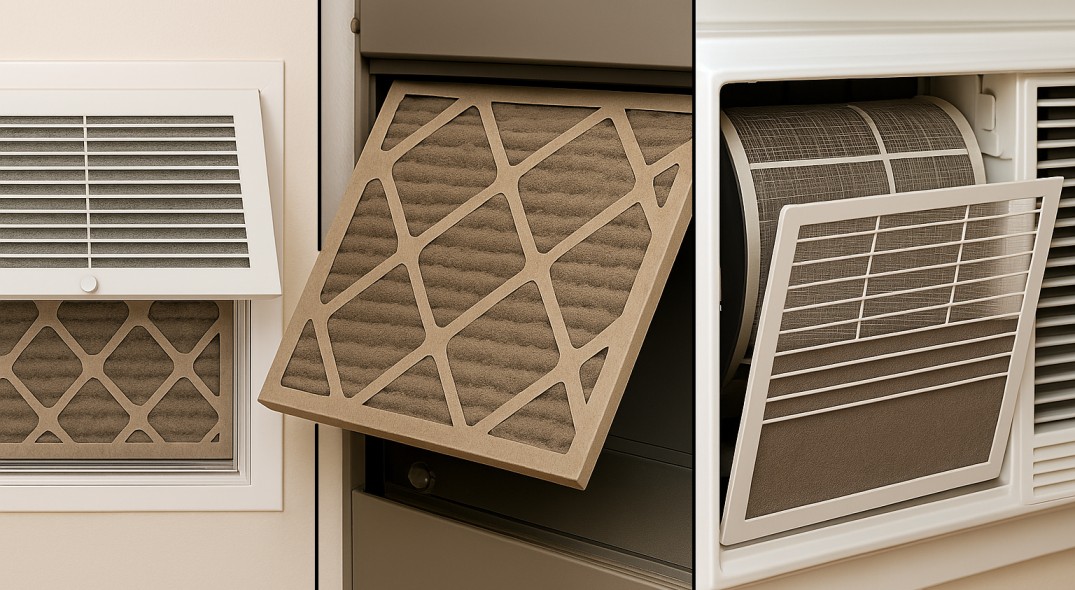
You don’t need an air conditioner repair Austin professional to change an HVAC air filter. It’s something every person can do in 10 minutes using the tools they have in their garage or shed. Yes, we are an AC repair Austin company, but we do not sell services by making everything seem too difficult.
When DIY's easier, affordable, safer, and time-saving, we tell you how to do that instead of selling. Let’s see how you can replace your HVAC unit’s air filters, whether it's a centralized system in your detached home or a window AC in your apartment.
You can change your air filter yourself by locating the filter compartment, removing the old filter, and inserting a new one of the correct size.
Most home HVAC or car air filters are designed for easy replacement and require no tools or air conditioner repair Austin professional’s help.

Replace air filters in your home by turning off the HVAC system, locating the filter compartment, removing the old filter, and inserting a new one with the airflow arrows pointing correctly. Replace filters every 1–3 months, depending on usage and filter type. Let’s see the step-by-step process in detail below:
Find your air filter’s location by checking the most common locations, such as:
Your home may have multiple filters that need replacement, so check all of these spots even if you manage to find a filter at the first spot. Consult your owner's manual if you're unsure of filter locations or search on Google like this “Your HVAC Brand + filter location” without quotes to find guides on this.

Choose between pleated (lasts up to 3 months) or non-pleated (change monthly). Make sure to check the MERV rating (Minimum Efficiency Reporting Value):
Higher MERV = better at trapping specific types of particles
Consider your system requirements - higher MERV ratings can restrict airflow in some systems
You don’t really need much supplies to change an HVAC air filter, most of these items will be found in your garage drawers except the new air filter:
5. Turn off the HVAC system
Now starts the actual process. For your safety, always turn off the HVAC system first. Go to your thermostat and turn off the system. This will also prevent dust circulation while you’re changing the filter.
If you have a window AC unit, unplug it from the socket to ensure there’s no risk of getting electricuted while you’re changing the filter.
You'll need to access your filter based on where it's located.
Each type has its own access method, but they're all designed to be homeowner-friendly for regular maintenance.

Now, gently pull or slide out the filter and place it directly in a garbage bag if it's very dirty. First, note the direction in which this filter was installed (check the airflow arrows on its frame). This will help you correctly install the new one.
There will be dust on the grill cover, especially on the inside. Make sure to clean it properly:
Take the new filter out of its packaging. Check for airflow direction arrows on the filter frame. Arrows should point toward the furnace/HVAC system (in the direction of airflow):
Getting this right ensures your filter traps particles effectively instead of letting dirt bypass the filter.
Once you know which way the new filter will go, it's time to install it. Do the following:
Tip: Mark the new filter with the current date using a market so the next time you change it, you’ll know exactly when it was installed.
Once its installed, put the cover grille or door back in its place, secure all tabs or latches and ensure everything is seated properly. Turn on the HVAC system back using thermostat or socket if its window AC and you’re done!
Change the air filter in a house every 1–3 months. Homes with pets, allergies, or high dust may need monthly changes. Standard filters typically last 90 days, but check manufacturer guidelines and inspect filters monthly for optimal airflow and air quality.
Most air filter manufacturers and HVAC companies recommend changing your air filter every 90 days (3 months) as a general rule.
However, this timeline changes based on your specific situation. After an air conditioner repair Austin service, ask the tech for advice about your specific home setup.
Filter Type | General Replacement Advice |
Basic fiberglass filters | Every 30 days |
Higher-quality pleated filters | Every 90 days (up to 6 months in good conditions) |
HEPA filters | 3-5 years (mainly for standalone air purifiers) |
Filter thickness also matters. Thicker filters don't need to be changed as often:
You'll know you need a new filter when it looks gray or you can see dust buildup. Some folks in Austin set phone reminders so they don't forget. Your air conditioner repair Austin technician might offer a maintenance plan that includes filter changes.
Check your filter monthly just to be safe. If you can't see light through it when you hold it up, it's time for a new one. This small habit saves big bucks on AC repair Austin bills later.
A bad air filter causes all kinds of trouble in your home or car. You'll notice reduced airflow, higher bills, dusty air, funky smells, and maybe even more allergy flare-ups. Your HVAC system might heat or cool your rooms unevenly. In cars, expect sluggish acceleration and worse gas mileage.
The first sign most people spot is weak air coming from vents. Just put your hand in front of a vent – if the airflow feels wimpy, your filter might be clogged. You might also notice cold spots in certain rooms because your system can't push air everywhere it needs to go.
When filters get gunked up, your home won't stay at the temp you want. Some rooms feel like an icebox while others feel like a sauna. Your system will keep turning on and off more than normal – what pros call "short-cycling." This happens because your system is working overtime trying to breathe through that dirty filter.
If you need AC repair Austin experts often find that dirty filters are the culprit behind many common cooling problems. A simple filter change can sometimes fix what seems like a major issue.
Dirty filters make your system work harder, which jacks up your energy bills. The U.S. Department of Energy says a clogged filter can waste 15% more energy. That's serious cash down the drain every month!
If you ignore a dirty filter too long, ice will build up on the evaporator coils. Your system might overheat or shut down completely. What may start as a $20 filter replacement could turn into an air conditioner repair Austin homeowners typically spend hundreds on.
You'll notice weird smells coming from vents – musty, moldy, or just plain funky. Dust will pile up everywhere, especially near vents. Everyone in the house might start sneezing more or having allergy symptoms that weren't there before.
Don't wait until these symptoms get bad. Check your filters monthly and change them every 1-3 months, depending on pets, allergies, and how much you use your system. Your lungs and wallet will thank you.
Regular maintenance saves you from costly repairs and keeps your HVAC running efficiently for years. Grande Air Solutions offers comprehensive maintenance plans starting at just $240, including bi-annual tune-ups, priority service, and repair discounts.
Our Grande Club Membership gives you extended warranty coverage, 10% off repairs, and zero charges for weekend or holiday service calls.
Don't wait for your system to break down—call (512) 677-4424 today to join their maintenance plan and protect your HVAC investment.
